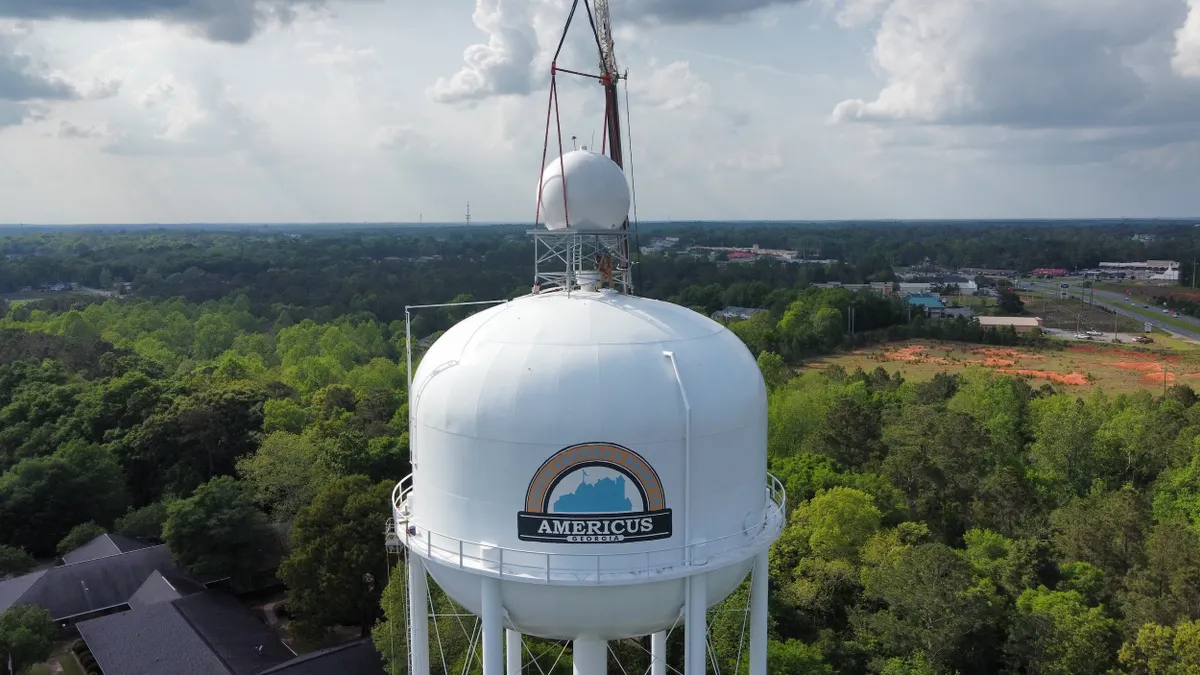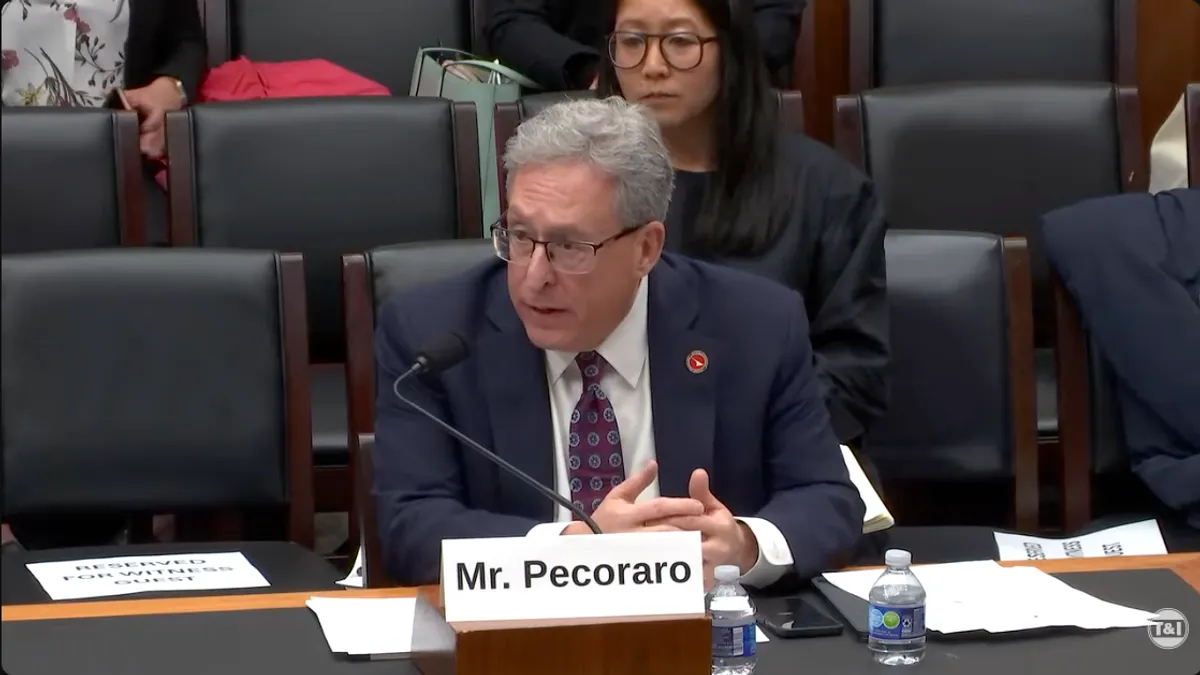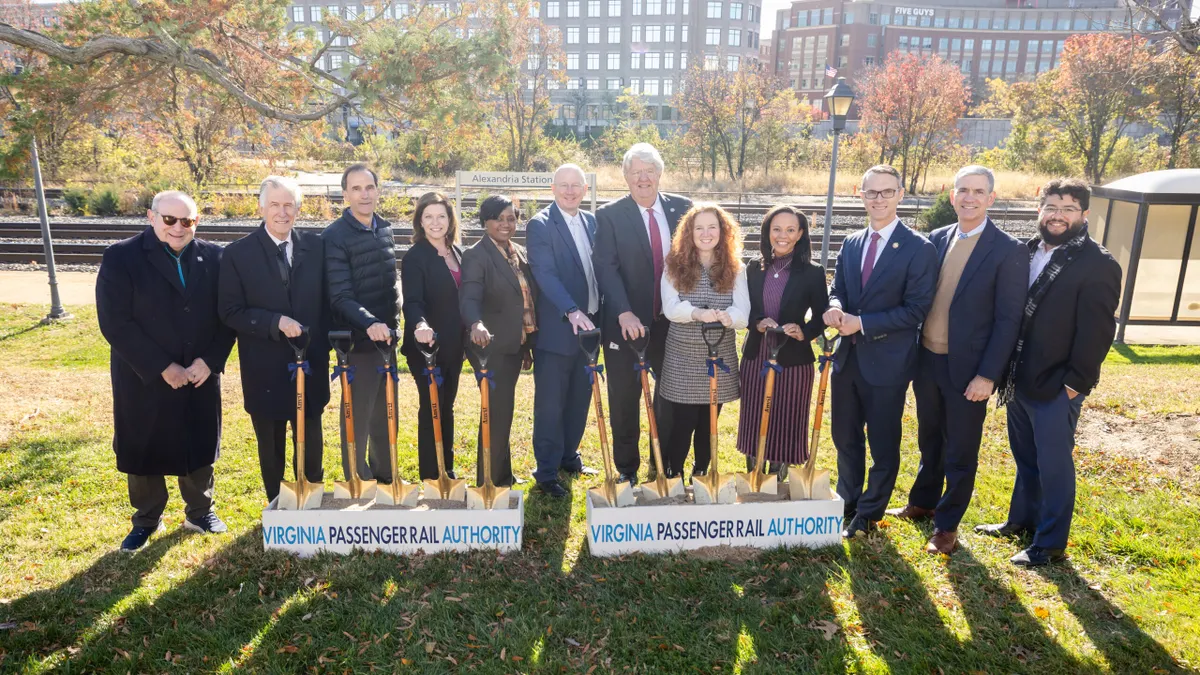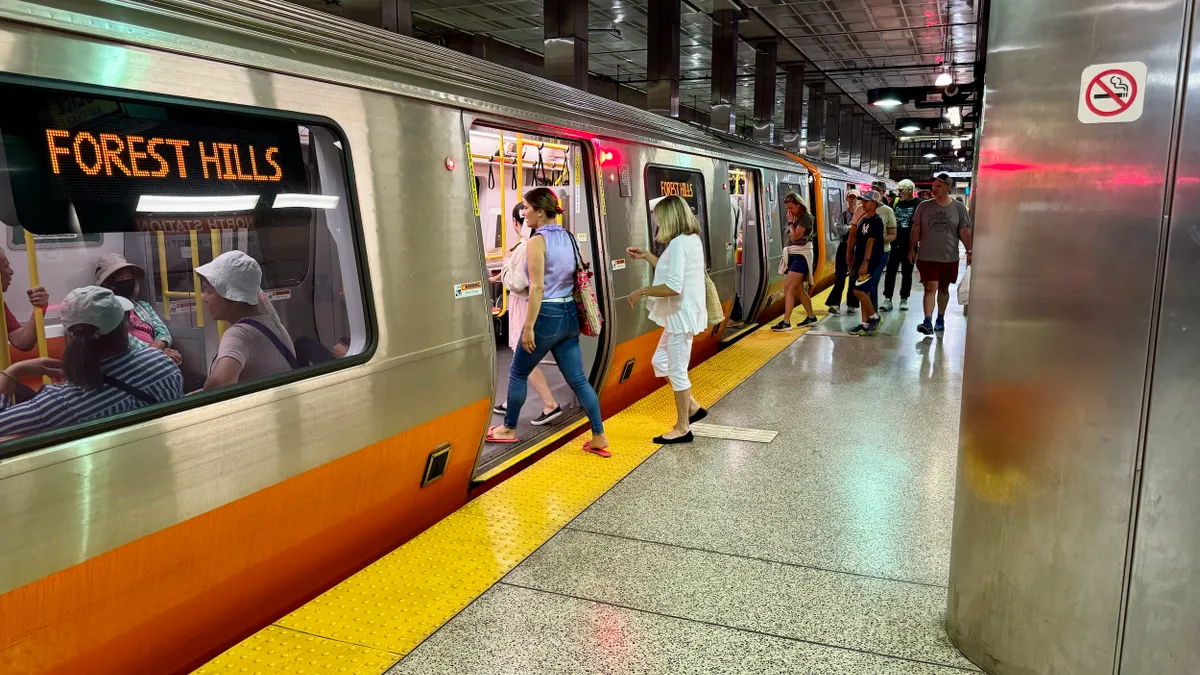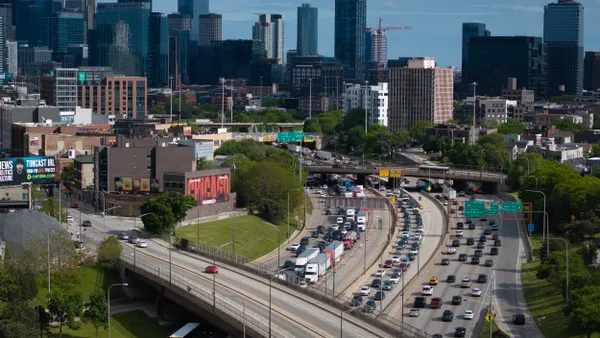The world of mobility and transportation is evolving constantly, and with autonomous vehicles (AVs) set to grow in use, there are even more changes afoot for transit agencies and citizens alike.
One of the companies at the center of all this change is Transdev, a French-based private operator of public transportation, which operates in 20 countries and moves millions of people around each day. Not only does Transdev operate traditional transit like buses, trains and trams, it also offers employee shuttles for Silicon Valley businesses including Yahoo, Apple and Tesla that get workers onto campus and around them.
Yann Leriche, Transdev’s North America CEO and head of autonomous transportation systems, said that as technology changes mobility, the company is focused on an acronym it refers to as "PACE," which stands for Personalized, Autonomous, Connected and Electric. "It's not just a nice word, it's really where we invest," Leriche said.
Smart Cities Dive caught up with Leriche at the LA CoMotion Leadership Conference in Los Angeles to discuss AVs, how cities can prepare and what the United States could learn from Europe on transportation and mobility.
This interview has been edited for clarity and brevity.
SMART CITIES DIVE: How are new technologies changing the work Transdev does? How does your 'PACE' initiative fit in?
YANN LERICHE: Personalized: For years, it was big buses and big vehicles, which have a future as they are the most efficient way to transport a lot of people in dense areas. Micromobility is fine, and will be an addition to public transport, but we don't believe it will replace transit. At the same time, you want information for yourself. You want to know something about routes you take, for example. Technology enables us to better know our end customers, because before that they were just buying a paper ticket, but now we know where they are, how they use the service, so we can inform them better and push them better offerings. Personalization can also be more flexible solutions. Public transport will remain the backbone, but other first and last-mile solutions, microtransit also can help provide a better service at a better cost. We also invest in that field.
Autonomous: It's quite obvious but it's coming. We don't know exactly when and how, but it's coming, and we invest because we believe that public transport might be a place where the real first autonomous services will exist. The use case here of fixed-route service is much simpler than a car getting anywhere in L.A., for example. Very probably, the first real commercial service without a driver in the vehicle will be for public transport, so we invest in that.
Connected: The idea of mobility as a service (MaaS), everyone being connected to many different modes of transportation. We work on that. In Europe, transport has services that combine everything, just because there is more investment in that field.
Then electric: Transdev is one of the leading operators of electric buses in the world. The leading country in that is the Netherlands, where we are the leader in public transport. We have hundreds of vehicles already running today, and we invest quite a lot in that field too. It's not the same type of technology as the smart ones mentioned before, but it's new technology and it's a bit more complicated than people think because the engine is different, but then the question is: what kind of battery do we have? Do we charge at night at the depot, at the end of each route, or do we do what we call opportunity charging at each stop? PACE is not just a theory on our side, it's where we go, and technology is the driver of it.
What will it take for us to see autonomous public transport? What needs to happen?
LERICHE: One is regulation. They should be operated without a driver, so there are many open questions. The second key point is being able to build a strong safety case, because they will run without a driver in them so you need demonstrate the safety of passengers and people around the vehicle. There is a question of the process. Driving thousands of miles is one solution, but if you want to achieve a very high standard of safety you have to run so many miles that simulation will be important. But there is a question of the technology being mature, and also when it is mature, how do we prove that what we have is safe enough so that people can commit and take passengers without taking risks?
"Better integration of those different areas, of mobility and urbanism and city planning, is something that people in the US could learn from."

Yann Leriche
North America CEO, Transdev
How should it be regulated, and how should cities prepare?
LERICHE: Safety is clearly a topic where this is a role for the authorities. Like with the cars you buy, there are safety regulations. They have to regulate and say what is the level of tests that have to be made to say it's safe enough and can go on the streets. This is very important as it's about the safety of people inside the vehicle but also outside. If you walk on the street and have nothing to do with AVs, you can still be killed by a vehicle. It's a public issue.
Second, it's a new vehicle, a bit like the scooters and bikes that are popping up everywhere. All those modes, we always say that everything is complementary, but all those modes are also in competition as the public space and streets will not grow. What is the space that we reserve for bikes, for pedestrians, for AVs, for other modes? All this has to be thought through. What are the new rules of the streets in the future when those vehicles come? Do we put AVs in dedicated lanes, do we prefer them in mixed traffic, how do we mix all this with the other modes?
There is a question also around ethics. The first company to have a public position on this was Daimler in 2016, and they said they would always put the safety of the people within the Mercedes cars first, compared to the people outside the cars. Two days later, they had to back up, because people were saying, "Basically, you say the lives of people that have the money to buy a Mercedes car are worth much more than the people in the streets." Germany is the first country to have started to officially communicate about rules, and the first they have put in place is that you cannot make the choice between two people when you have to make a choice based on their age, race, characteristics. One person is one person, independent of anything else. Here also, we need regulation.
A fourth topic that will be key is everything around data protection. There are many cities with street cameras, which are strictly controlled. In the future, those AVs have sensors and LiDAR and other technology, and will capture much more data than any city in the world today. If all that data is owned by private companies, what are they really going to do with it?
What can the United States learn from Europe when it comes to mobility?
LERICHE: The U.S., it's quite interesting, because they invest much less in public transport than Europe. And at the same time, today, a lot of innovations are coming from the U.S., especially California, where this is an ecosystem that is very innovative. If I had to pick one topic, I would say transit-oriented development. It also depends on the countries in Europe, so I don't want to make it too general.
But when cities are developed, I see probably less silos in Europe between urbanism and mobility because people know that, maybe also because space is more scarce in many countries in Europe, you don't have the choice but to think of housing and transport modes and how people will move at the same time. Here it's less regulated. Let's look at Los Angeles, for example. When there was a lot of sprawl, it's much more difficult to have efficient public transport. Better integration of those different areas, of mobility and urbanism and city planning, is something that people in the U.S. could learn from.






